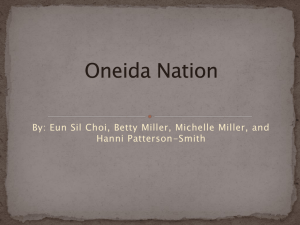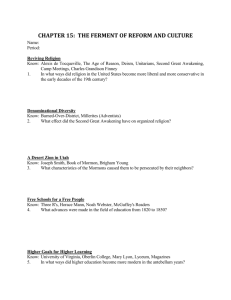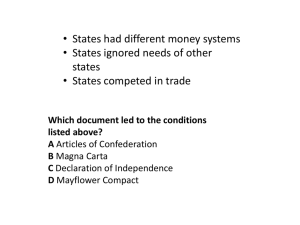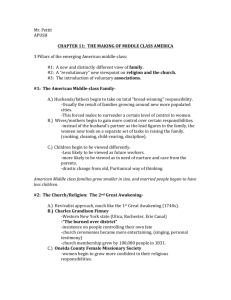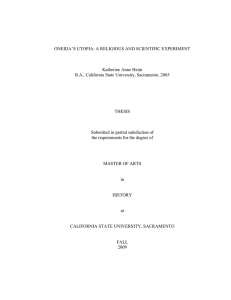Oneida’s Two Utopias: An Upbeat History Lesson
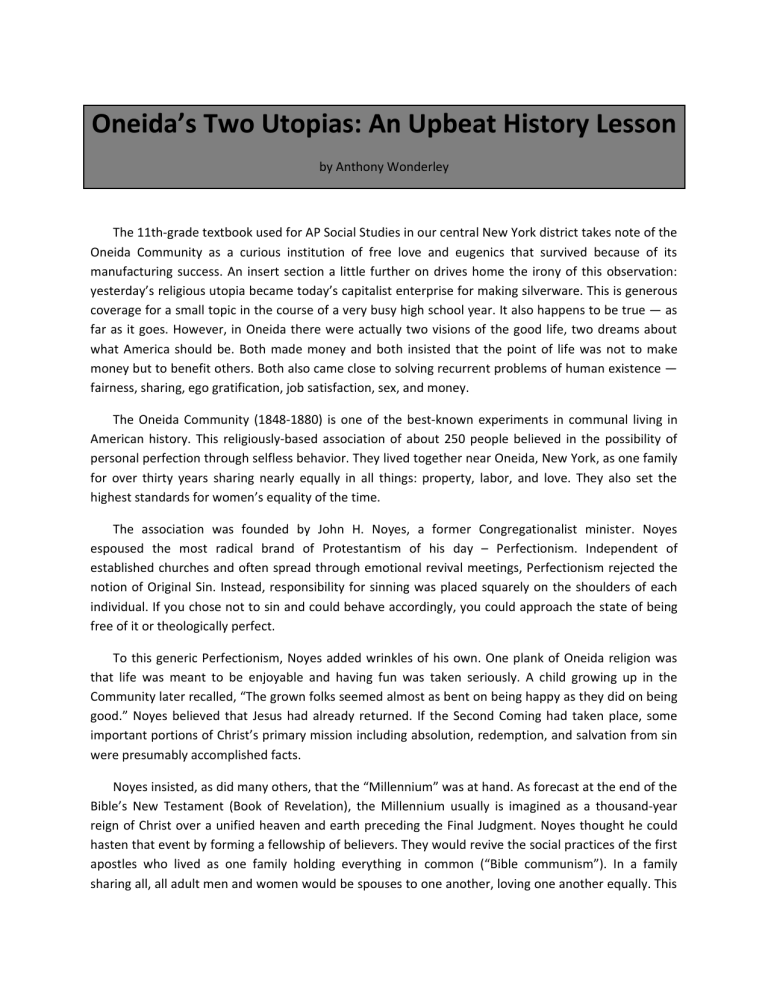
Oneida’s Two Utopias: An Upbeat History Lesson
by Anthony Wonderley
The 11th-grade textbook used for AP Social Studies in our central New York district takes note of the
Oneida Community as a curious institution of free love and eugenics that survived because of its manufacturing success. An insert section a little further on drives home the irony of this observation: yesterday’s religious utopia became today’s capitalist enterprise for making silverware. This is generous coverage for a small topic in the course of a very busy high school year. It also happens to be true — as far as it goes. However, in Oneida there were actually two visions of the good life, two dreams about what America should be. Both made money and both insisted that the point of life was not to make money but to benefit others. Both also came close to solving recurrent problems of human existence — fairness, sharing, ego gratification, job satisfaction, sex, and money.
The Oneida Community (1848-1880) is one of the best-known experiments in communal living in
American history. This religiously-based association of about 250 people believed in the possibility of personal perfection through selfless behavior. They lived together near Oneida, New York, as one family for over thirty years sharing nearly equally in all things: property, labor, and love. They also set the highest standards for women’s equality of the time.
The association was founded by John H. Noyes, a former Congregationalist minister. Noyes espoused the most radical brand of Protestantism of his day – Perfectionism. Independent of established churches and often spread through emotional revival meetings, Perfectionism rejected the notion of Original Sin. Instead, responsibility for sinning was placed squarely on the shoulders of each individual. If you chose not to sin and could behave accordingly, you could approach the state of being free of it or theologically perfect.
To this generic Perfectionism, Noyes added wrinkles of his own. One plank of Oneida religion was that life was meant to be enjoyable and having fun was taken seriously. A child growing up in the
Community later recalled, “The grown folks seemed almost as bent on being happy as they did on being good.” Noyes believed that Jesus had already returned. If the Second Coming had taken place, some important portions of Christ’s primary mission including absolution, redemption, and salvation from sin were presumably accomplished facts.
Noyes insisted, as did many others, that the “Millennium” was at hand. As forecast at the end of the
Bible’s New Testament (Book of Revelation), the Millennium usually is imagined as a thousand-year reign of Christ over a unified heaven and earth preceding the Final Judgment. Noyes thought he could hasten that event by forming a fellowship of believers. They would revive the social practices of the first apostles who lived as one family holding everything in common (“Bible communism”). In a family sharing all, all adult men and women would be spouses to one another, loving one another equally. This
state of “complex marriage” contrasted with monogamous relations in the outside world that limited marriage to an isolated pair dominated by the male. They would also counteract sin by practicing its opposite. Defining sin as selfishness, the Oneida Community dedicated itself to utter selflessness in every act and thought. Since selflessness always faces outward, neglecting the welfare of others was the greatest sin of all.
About 1840, Noyes gathered together a small group of followers in Putney, Vermont, and, gradually, put his beliefs into practice. When neighbors raised strenuous objections to the unusual marriage practices, the Perfectionists relocated to upstate New York in 1848. At Oneida, they joined with several other groups of Perfectionists and set to work creating heaven on earth in daily life and in the surrounding world.
Utopian Community
Their intension was to live off of garden vegetables and tree fruits, to be as children of nature in their own idyllic Garden of Eden. Like most other utopians, they found that this did not work; they needed money. By the early 1850s, they were fabricating traveling bags and canning fruits and vegetables. Eventually, they learned to make silk thread.
The major industry, however, was metal animal traps. Among their early members was blacksmith
Sewell Newhouse who hand-forged an improved model of a trap that was popular locally. When the
Oneida Community took up trap-making, they improved Newhouse’s design, mechanized the manufacturing process, and marketed the product under the name “Newhouse.” If you wanted a good trap, you probably would ask for a genuine “Newhouse” by name. By the early 1860s, they were manufacturing over 200,000 traps a year. Production on this scale demanded a new factory and the hiring of hundreds of employees. Thus, the Bible Communists became industrial capitalists and substantial employers.
Second Generation
By 1869, they felt prosperous enough to raise a group of children, and embarked on one of the most daring experiments in the human experience, an attempt to breed people. As students of Darwin, they suspected that spirituality might be genetically transmissible. If so, no one was better qualified than the
Perfectionists to produce spiritually elevated people who would benefit mankind. They coined the term
“stirpiculture,” from a Latin word meaning stock or root. Children born in the program (close to 60) were called “stirpicults.”
The Oneida Community lasted a little over 30 years and ended for several reasons. Internally, its members could not agree who or what should replace the leadership of the aging John Noyes.
Externally, the world had become a much more prudish place. This was the heyday of Victorian domestic values and, in the United States unconventional marriage arrangements were not tolerated. The community, however, did not disappear completely. It voted to transform itself into a joint stock-holding
company called Oneida Community, Ltd.
The new business, established in 1881, continued the existing industries of the Oneida Community and maintain the Oneida Community’s residence, the “Mansion House,” for Community members and their descendants. After the Oneida Community, Ltd. barely survived its first 15 years, it was saved by the return of the now-grown stirpicults. The younger people reorganized the firm to meet changing conditions of industrial mass production and cutthroat marketing competition (Carden, 1998). They refocused the company on manufacturing high-end silverware and developed innovative advertising and marketing techniques that influenced the course of advertising in the twentieth century. They were the first to commission such leading graphic artists of the day as Coles Phillips and Maxfield Parrish to design full-page color ads in national magazines. It was a big gamble but it paid off.
Biblical Communists Turned Businessmen
The returned children, now directors of the company, were not ordinary business people. Raised as
Bible Communists, they were imbued with many of their parents’ values. These they adapted to their own time, especially the view that business must be about benefiting others. Soon after 1900, Oneida
Community, Ltd. provided its employees with generous pensions, health/welfare benefits, and a share of the profit. They then built Sherrill, New York, a workers' community that was politically independent of the company. To encourage private home ownership, the company sold lots to employees below market value then gave them cash bonuses to build houses. The Oneida Community Ltd. funded electrical, water, and sewage systems. The company contributed heavily to fire protection and garbage collection. In addition to establishing facilities for public health and recreation, they paid for or helped to fund churches and a library. To ensure quality education, the company donated building lots and paid at least half the cost of erecting an elementary and a high school. The company also paid half the teachers' salaries and provided free room and board for local teachers in the Mansion House (Noyes, 1958). For about 40 years, this was one of America's least known but most successful experiments in welfare capitalism, a second utopia coming directly out of the ideals and personnel of the Oneida Community.
The Mansion House and grounds remain much as they were in Oneida Community days. Today the site is a National Historic Landmark called the Oneida Community Mansion House (OCMH). Chartered as a non-profit museum under the state university system, the OCMH is strongly committed to the mission of education. For high school classes, we offer a program (“The Oneida Community: Utopian Window on
19th-century America”) comprising a customized tour and a resource packet for instructors. For further information, contact the curator, Tony Wonderley at awonderley@oneidacommunity.org or 315-363-
0745.
References
Carden, Maren Lockwood (1998). Oneida: Utopian Community to Modern Corporation . Syracuse, NY:
Syracuse University Press.
Noyes, Pierrepont B. (1958). A Goodly Heritage . NY: Rinehart.
